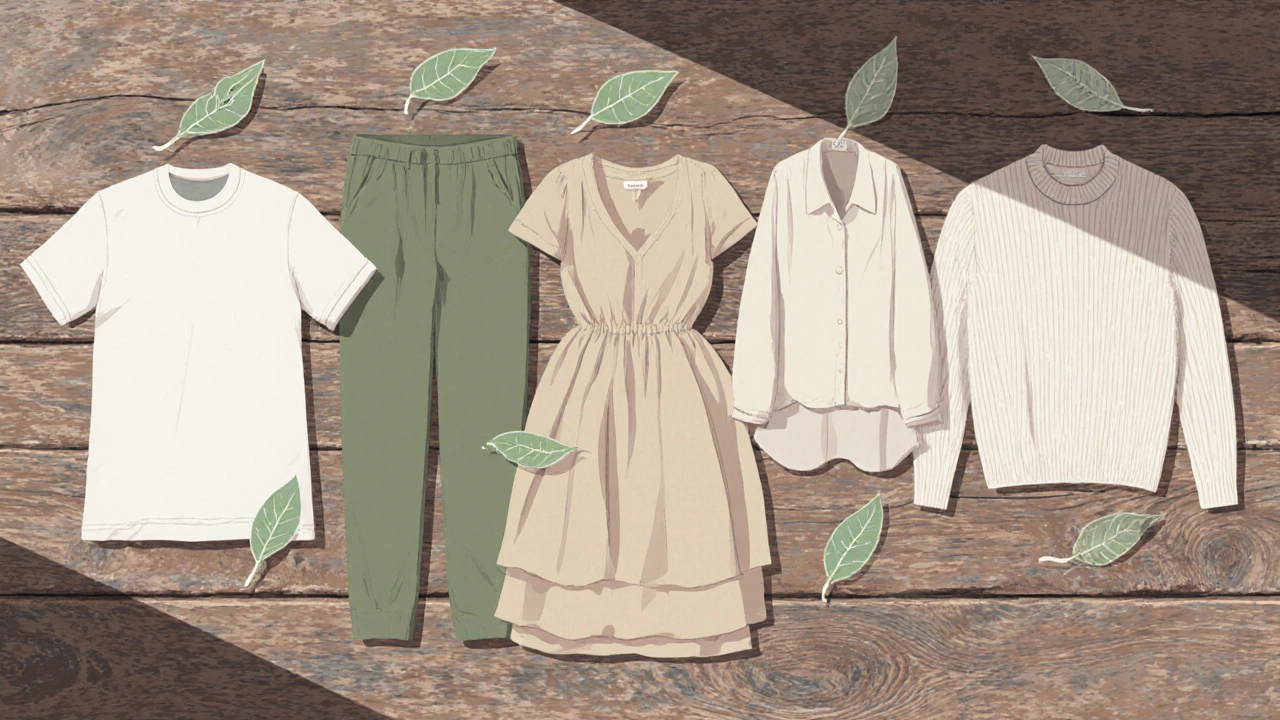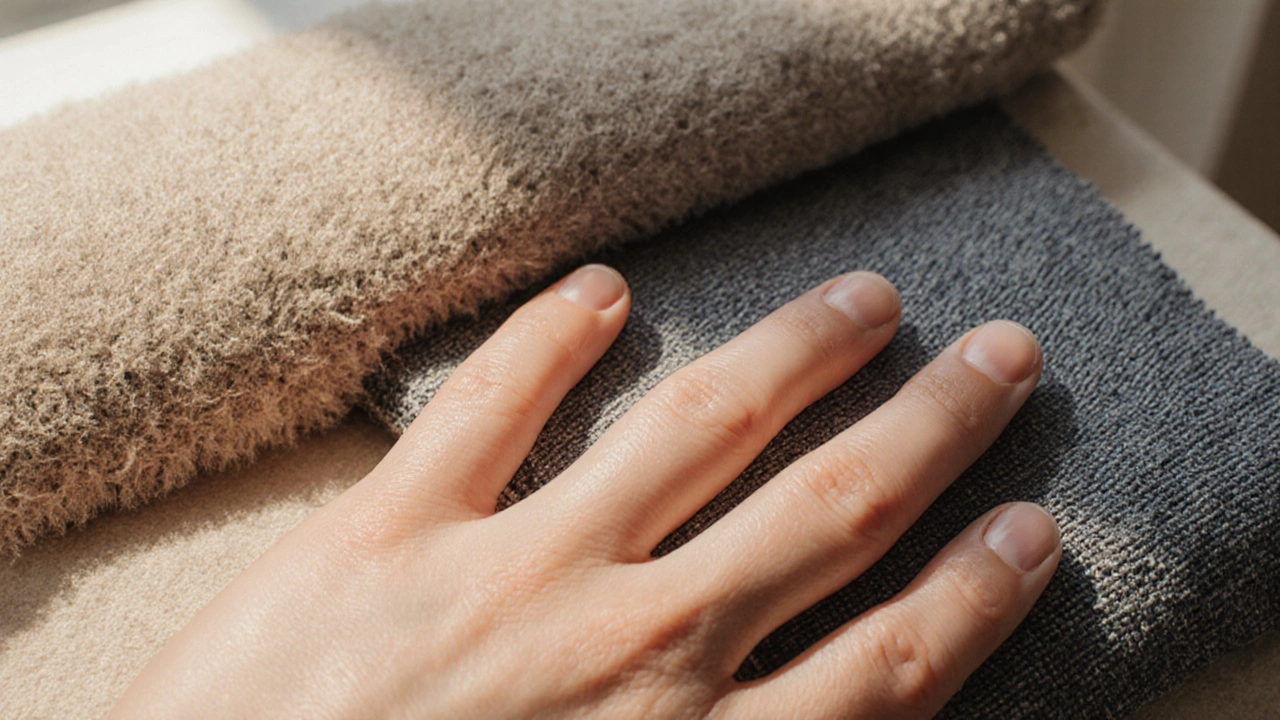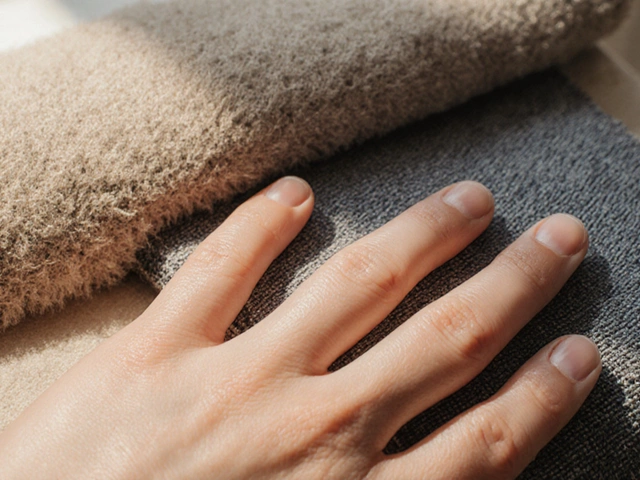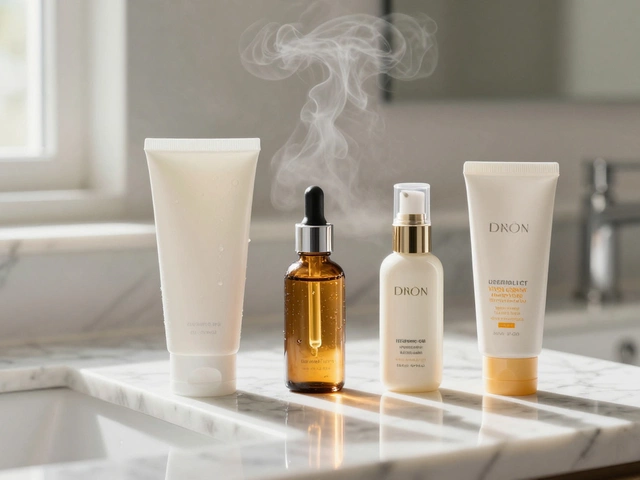Healthiest Clothing Fabric Selector
Select Your Preferred Fabrics:
Recommended Fabric for You
When you pick out a shirt or pair of leggings, the first thing you usually look at is style or price. But the material you wear can affect your skin, hormones, and even the air you breathe. Understanding the healthiest clothing means looking beyond fashion trends and digging into what the fibers are made of, how they’re processed, and what chemicals linger on the surface.
Quick Takeaways
- Natural, minimally processed fibers such as organic cotton, hemp, and linen are the safest choices for sensitive skin.
- Look for certifications like GOTS or Oeko‑Tex to verify low‑toxin production.
- Avoid fabrics treated with heavy finishes, synthetic dyes, or high‑release microplastics.
- Proper washing with fragrance‑free detergents preserves the health benefits of natural fabrics.
- Consider climate and activity level - breathable, moisture‑wicking fabrics keep skin dry and prevent irritation.
Why Fabric Matters for Your Health
Clothing interacts with your body every hour of the day. Rough or chemically treated fibers can cause:
- Skin irritation or dermatitis from dyes, formaldehyde, or azo compounds.
- Allergic reactions to latex or synthetic elastomers.
- Heat rash when moisture is trapped against the skin.
- Long‑term exposure to endocrine‑disrupting chemicals that leach from synthetic finishes.
Even the tiny particles shed during wear - microplastics from polyester - can be inhaled or absorbed through the skin, adding a hidden risk.
Top Natural Fabrics for Healthy Skin
Organic cotton is a soft, breathable fiber grown without synthetic pesticides or genetically modified seeds. Because it avoids the toxic residues common in conventional cotton, it’s less likely to trigger eczema or contact dermatitis. The fabric’s high absorbency keeps sweat away from your skin, reducing bacterial growth.
Hemp offers a rugged yet comfortable feel and naturally resists mold and UV radiation. Its fibres are 30% stronger than cotton, meaning fewer seams need reinforcement, which reduces the amount of stitching glue - a frequent source of skin irritants. Hemp also becomes softer with each wash while retaining breathability.
Bamboo fabric is derived from the pulp of the fast‑growing bamboo plant. The resulting fiber is silky, hypoallergenic, and has intrinsic antimicrobial properties that keep odor at bay. Look for “mechanically processed” bamboo (often called bamboo linen) rather than “bamboo viscose,” which involves harsh chemicals.
Tencel (lyocell) is a closed‑loop, wood‑derived fiber produced from sustainably harvested eucalyptus. The manufacturing process recycles 99% of the solvent, leaving virtually no toxic waste. Tencel drapes like silk, wicks moisture efficiently, and its smooth surface minimizes friction‑related skin irritation.
Linen comes from the flax plant and is prized for its cool, airy texture. It excels in hot climates because it allows air to circulate and dries quickly, preventing the sweaty environment that fuels fungal infections. Linen’s natural luster also means you can wear it un‑starched for a relaxed, chemical‑free look.
Merino wool is a fine, breathable animal fiber that regulates temperature. Unlike coarse wool, Merino’s fibers are under 20µm, reducing itchiness. It naturally wicks moisture, resists odor, and can be worn next to the skin without a lining, making it a great option for outdoor enthusiasts.

What to Watch Out For: Less Healthy Options
Synthetic polyester, nylon, and acrylic dominate fast‑fashion collections because they’re cheap and durable. However, they:
- Trap heat and moisture, creating a breeding ground for bacteria.
- Release micro‑plastic fibers with every wash, which can embed in skin or be inhaled.
- Often receive heavy finishes (flame retardants, anti‑wrinkle agents) that contain endocrine‑disrupting chemicals.
If you must wear synthetics for performance reasons (e.g., high‑intensity sports), choose brands that market “recycled polyester” with verified low‑emission dyes and avoid added finishes.
How to Verify a Garment’s Health Credentials
Third‑party certifications give you a shortcut to trustworthy fabrics:
- GOTS (Global Organic Textile Standard) guarantees that the fiber is at least 70% organic and that the entire supply chain meets strict chemical limits.
- Oeko‑Tex Standard100 (mark your Oeko‑Tex) ensures the final product is free from harmful substances above a certain threshold.
- Bluesign focuses on eliminating hazardous chemicals during production and guaranteeing safe working conditions.
When you see these labels, double‑check the tag for the exact rating (e.g., “100% organic” vs “50% organic blend”).
Keeping Your Healthy Wardrobe Healthy
The way you launder clothes can either preserve or strip away the benefits you paid for.
- Use fragrance‑free, phosphate‑free detergents. Fragrances can linger on fibers and irritate sensitive skin.
- Wash at lower temperatures (30-40°C). High heat can degrade natural fibers and increase chemical release.
- Avoid fabric softeners; they coat fibres and reduce breathability.
- Air‑dry whenever possible. Tumble drying can shrink natural fibers and accelerate wear.
- Store garments in breathable cotton bags, not sealed plastic, to prevent mold growth.

Side‑by‑Side Fabric Comparison
| Fabric | Breathability | Moisture‑Wicking | Allergen Risk | Sustainability | Typical Price (USD per yard) |
|---|---|---|---|---|---|
| Organic cotton | High | Medium | Low | Moderate - organic farming uses less water & no pesticides | 8‑12 |
| Hemp | High | Medium | Very Low | Highly sustainable - grows without irrigation or chemicals | 7‑10 |
| Bamboo linen | Medium‑High | Medium | Low | Renewable but processing can be chemical‑intensive (choose mechanical) | 9‑14 |
| Tencel (Lyocell) | High | High | Low | Closed‑loop production, low waste | 12‑18 |
| Linen | Very High | Medium | Low | Low water use, biodegradable | 10‑15 |
| Merino wool | Medium | High | Low (if fine‑grade) | Renewable, but animal‑welfare varies | 15‑25 |
| Polyester (standard) | Low | Low‑Medium | Medium‑High (chemical finishes) | Petroleum‑based, non‑biodegradable | 5‑8 |
Putting It All Together
Choosing the healthiest clothing is less about chasing the latest runway trend and more about matching material properties to your body’s needs. Start with a core wardrobe of certified organic cotton tees, hemp pants, and a few Tencel tops for work‑day comfort. Add performance pieces-like recycled polyester jackets-only when the activity demands it, and always look for low‑impact finishes.
When you shop, keep three questions in mind:
- What fiber makes up the garment?
- Has the product earned an independent low‑toxicity certification?
- Will the care instructions preserve its health benefits?
Answering “yes” to all three means you’ve likely found a piece that will keep your skin happy and the planet a bit healthier.
Frequently Asked Questions
Is organic cotton really better for skin than regular cotton?
Yes. Organic cotton is grown without synthetic pesticides or harsh chemicals, which reduces the risk of skin irritation. The fibers also tend to be softer because they’re not exposed to harsh bleaching processes.
Can I wear bamboo fabric if I have eczema?
Bamboo linen, which is mechanically processed, is naturally hypoallergenic and breathable, making it a good choice for eczema‑prone skin. Avoid “bamboo viscose” unless the brand specifies a closed‑loop, low‑chemical process.
Do certifications like GOTS guarantee no chemicals?
GOTS sets strict limits on pesticide residues, heavy metals, and harmful dyes throughout the supply chain. While no label can promise 100% chemical‑free, GOTS‑rated garments are among the safest options available.
How often should I wash natural‑fiber clothes?
Unless they’re visibly soiled, natural‑fiber garments can be aired out and worn a few times before washing. Over‑washing erodes fibers and reduces the environmental benefit.
Are recycled polyester garments healthier than virgin polyester?
Recycled polyester reduces landfill waste but still shares many of the same moisture‑trapping and micro‑plastic shedding traits as virgin polyester. Choose recycled options only when performance is essential, and prefer those with non‑toxic dye processes.
Next Steps
Start a “health‑wardrobe audit”: pull out every shirt, note the fiber and any certification, and set aside items that don’t meet the low‑toxicity criteria. Replace them gradually with pieces from the natural fabrics listed above. Over time you’ll notice fewer skin flare‑ups and a lighter environmental footprint.







